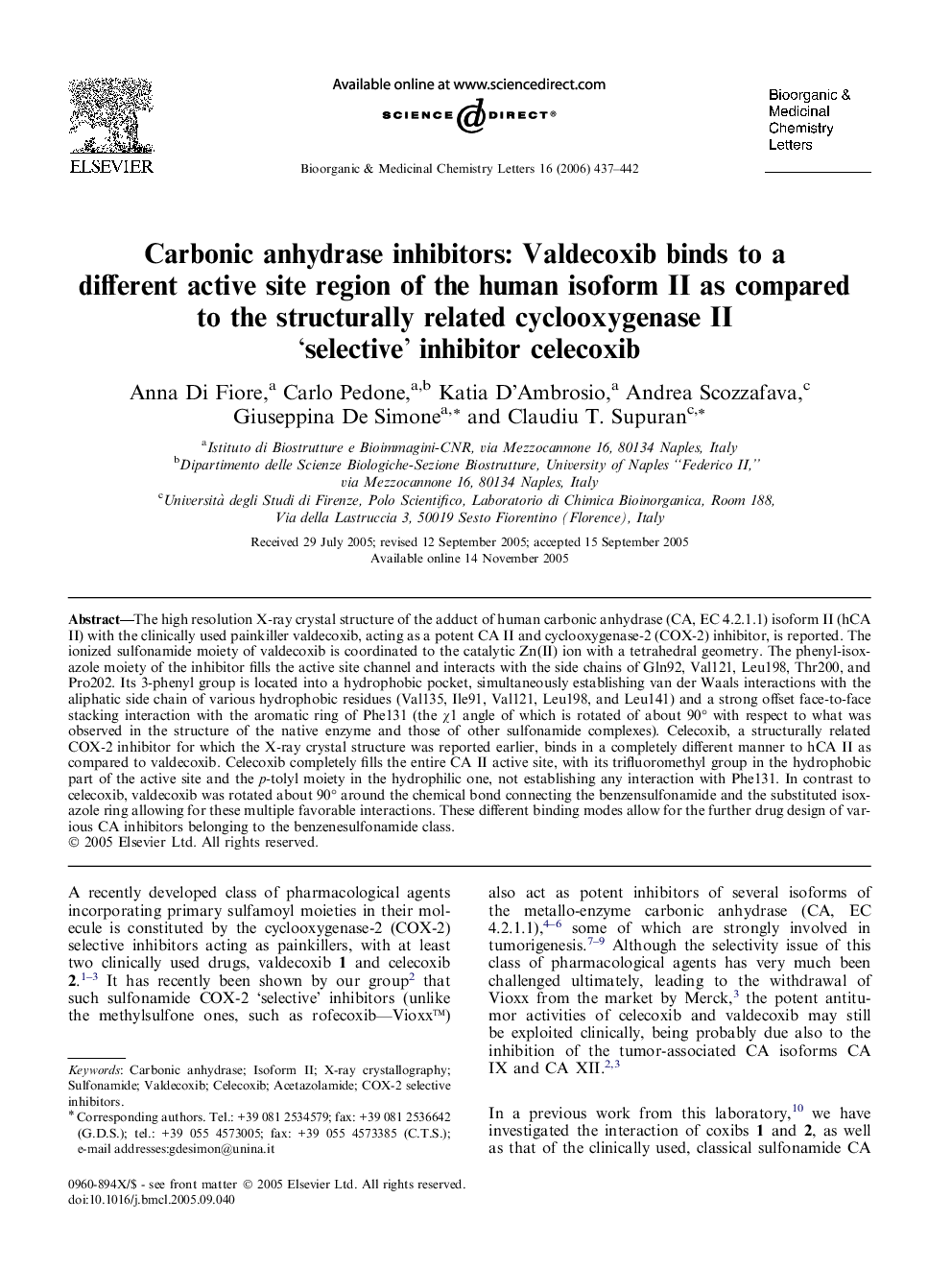| کد مقاله | کد نشریه | سال انتشار | مقاله انگلیسی | نسخه تمام متن |
|---|---|---|---|---|
| 1377676 | 981984 | 2006 | 6 صفحه PDF | دانلود رایگان |

The high resolution X-ray crystal structure of the adduct of human carbonic anhydrase (CA, EC 4.2.1.1) isoform II (hCA II) with the clinically used painkiller valdecoxib, acting as a potent CA II and cyclooxygenase-2 (COX-2) inhibitor, is reported. The ionized sulfonamide moiety of valdecoxib is coordinated to the catalytic Zn(II) ion with a tetrahedral geometry. The phenyl-isoxazole moiety of the inhibitor fills the active site channel and interacts with the side chains of Gln92, Val121, Leu198, Thr200, and Pro202. Its 3-phenyl group is located into a hydrophobic pocket, simultaneously establishing van der Waals interactions with the aliphatic side chain of various hydrophobic residues (Val135, Ile91, Val121, Leu198, and Leu141) and a strong offset face-to-face stacking interaction with the aromatic ring of Phe131 (the χ1 angle of which is rotated about 90° with respect to what was observed in the structure of the native enzyme and those of other sulfonamide complexes). Celecoxib, a structurally related COX-2 inhibitor for which the X-ray crystal structure was reported earlier, binds in a completely different manner to hCA II as compared to valdecoxib. Celecoxib completely fills the entire CA II active site, with its trifluoromethyl group in the hydrophobic part of the active site and the p-tolyl moiety in the hydrophilic one, not establishing any interaction with Phe131. In contrast to celecoxib, valdecoxib was rotated about 90° around the chemical bond connecting the benzensulfonamide and the substituted isoxazole ring allowing for these multiple favorable interactions. These different binding modes allow for the further drug design of various CA inhibitors belonging to the benzenesulfonamide class.
Figure optionsDownload as PowerPoint slide
Journal: Bioorganic & Medicinal Chemistry Letters - Volume 16, Issue 2, 15 January 2006, Pages 437–442